Premium Only Content

Central Fixation and focusing exercises Working with tables, Labyrinth and focusing at the point
Labyrinth exercise will help visual acuity
To work with the "Labyrinth" table, you need to look at a large labyrinth from point A to point B, but not just like that, but stopping at each point for two seconds and quickly blinking. In this exercise, it is not speed that is important, but the correctness of the execution, so do not be discouraged if you periodically get lost with route and be at the same starting point. You can help yourself with using your finger or pencil, the main thing is to stop your gaze in every point and blink. To get the desired effect, the table is initially better position in the area of blurry vision so that the lines of the labyrinth are slightly vague. After completing the route, take a general look at labirynth, you will surely see it more clearly. The secret of this exercise is simple. For a long time fixing on lines and points, we always see better the larger pattern they form. In addition, repeated fixation on points will activate our macula, and blinking helps relieve tension from visual work. Next time you can go the opposite way. Follow route - from point B to point A.
Then you can turn a labyrinth table sideways or upside down to diversify the exercise. Move the maze as far away from your eyes as possible, or bring it closer to the minimum and always compare the original and the final perception of the table. When you can clearly see the big labyrinth, go to similar work with its reduced copy. To walk through the little labyrinth, from you and your eyes it will take much more effort, so do not rush to start work with him. But if you start to easily "walk" through the small labyrinth, congratulate yourself that you are no longer in danger of hyperopia. After all if you can see the dots and stripes of this drawing, then you are able to read the text the same size, which consists, in fact, of the same dots and stripes. If you can read the text without glasses and after a small labyrinth - it means that you not mentally relaxed enough, have not learned yet without stress look at the text like a picture. Then you just need to believe yours eyes and convince themselves that they can read the text as easily as see a small maze on the table. This exercise can be done while wearing a pirate band.
Working with tables
All letter bases are made up of points, strokes, and arcs. To be sure of this, select any line in any text, and then with a pencil draw a dot, stroke, or arc under each letter, whichever is what the base consists of. Then read the line again - for sure you you will see it more clearly. Close your eyes, make smooth turns with your head, while making even breaths in and out. Do the same with the next line, then read it quickly. If you failed to read the text, do not despair. Look at him again as in the picture and concentrate only on points, strokes and arcs.
Reading small fonts
I always do an experiments with the text typed small typographic type "diamond" it is around 4, which is presented in the book of Dr. Bates. When I first so this font, it was so difficult to read it, considering it impossible. Then I read the exact same text first, typed in larger type and located above the passage with small print. All nearsighted and people with normal vision easily can read it. Then I typed exactly the same text at the bottom, just in a smaller font. And I can read it on any distance and in any light, just if needed watching for the upper sample. The incredible happens: almost everything, with rare exceptions, easily read this font without looking at the text typed in large font. This experiment is the clearest evidence that even the slightest mental stress like a fear imposed on us of a petty font really affects vision, because of which people cannot read text. It is worth convincing people that the font is readable and giving them the opportunity peep, if difficulties arise, how the tension goes away, and the person begins to see the text normally. Just type same text with different font sizes in one page. Practice reading the largest print first, and then look at the sample with smaller text. Read it, allowing yourself to pry into text printed with a larger font. It is possible that you will be able to read familiar text without peeping. Just allow yourself to be more relaxed. In the same way, you can use magazines and newspapers in which individual fragments of the article are duplicated in a larger font.
EXERCISE "FOCUSING THE LOOK AT THE POINT "
To do this, you need to put any text in front of your eyes and find in the smallest point in the center that you can see. To eliminate hyperopia, the authors advise to put the text about 25 centimeters from the eyes it is around 10 inches. Nearsighted people to improve visual acuity, they recommend pushing back well illuminated page with text from the eyes 60 centimeters or more. Further, American followers of Bates propose focus on a point and circle it for fifteen seconds contours, as if you want to view through it. Then you need to relax your eyes and look at the point without straining. According to the authors, the technique of looking at a point is excellent. helps to maintain visual acuity, because when focusing looking at a point, a yellow spot on the retina is involved, responsible for sharp vision. However, the very concentration on a point in the text or some shallow the details in the center of the picture really stimulate the macula and develops the ability to fix attention on the center. Special if we do similar visual work with one eye closed bandage or "pirate glasses", which were mentioned above. In conclusion of this chapter, I will say that palming, solarization, repetitions and displacement and restoration of central fixation are four the most important reception of the Bates vision restoration program. It the red thread that should run through all your eye exercises! Everything that will be described later is important and necessary, but without mastering four relaxation techniques are unlikely to give a lasting effect. Therefore take the time to do palming, solarization, all kinds of pendular turns and movements, as well as to work on restoration of central fixation. Remember the importance of these techniques and find time in your schedule for each of them, do them when you feel tension or eye strain. In the morning and before bed, swing, do finger twists and palming. Be sure to close your eyes for 10 seconds at the first sign of eye fatigue during visual work. At every opportunity - on the street, at a bus stop, in the park - do solarization.
Thanks for watching this video to the end. Today we learned Labyrinth exercise, How to work with texts and focusing at the point exercises. What is left, it is just to practice them and to relax your eyes as much as possible. Subscribe to my channel and will see you again.
-
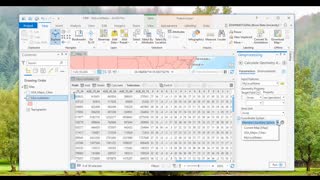 15:19
15:19
ArcGIS Pro Help
4 years ago $0.01 earnedWorking with Attribute Tables in ArcGIS Pro
43 -
 0:56
0:56
joey35
4 years ago $0.03 earnedWorking with monitor
2462 -
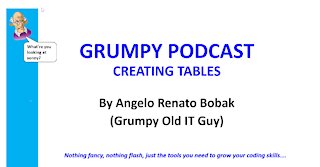 1:03:24
1:03:24
Learn SQL Server with the Grumpy Old IT Guy
4 years agoCreating Database Tables with Microsoft SSMS
84 -
 1:13
1:13
WorkingwithRalph
4 years agoWorking with Ralph
80 -
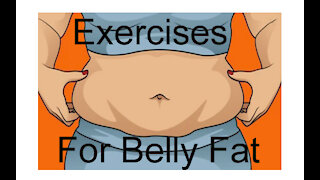 8:29
8:29
happyturtle1
4 years agoExercises to help with Belly Fat
108 -
 0:32
0:32
JohnBob.net Channel
4 years ago $0.02 earned5 Point Steam Threshers Reunion - Working Steam Tractor
111 -
 1:05:34
1:05:34
Timcast
2 hours agoDemocrats SUE, Trump USDA Says ITS DONE, No Food Stamps Will Come, Riots Feared
123K137 -
 1:59:16
1:59:16
The Charlie Kirk Show
2 hours agoProud to Be American? + VA and NJ + Charlie's Education Vision | Maloney, Arnn | 10.29.2025
28.4K4 -
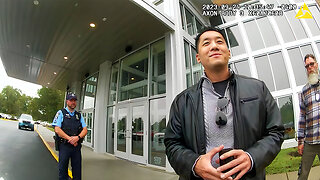 38:32
38:32
Code Blue Cam
2 hours agoHow Police Stopped a Potential Church Massacre...
22 -
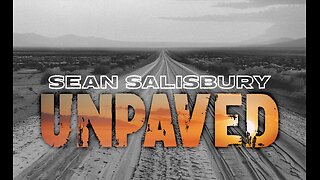 LIVE
LIVE
Sean Unpaved
1 hour agoBLUE JAYS SHOCK THE WORLD: Series Tied!, NFL Deadline Meltdown + NBA's Cup Chaos Begins
330 watching